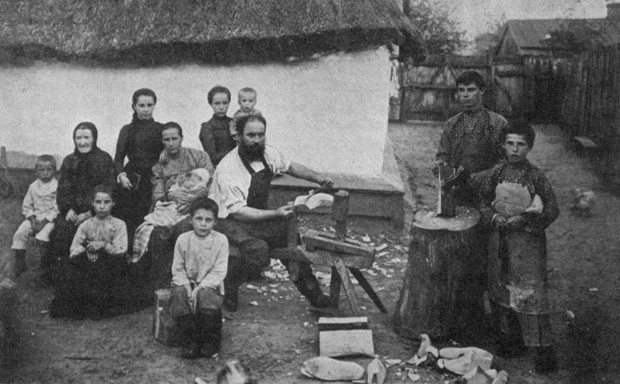Stundists
Stundists. Adherents of a religious revival movement in Southern Ukraine in the latter half of the 19th century that gave impetus to the formation of a variety of Protestant-oriented religious denominations. Stundism never constituted a formal religious body. It started in the early 1860s as a movement of Ukrainian peasants in Kherson gubernia who gathered for communal readings of the Holy Scriptures and hymn-singing, in the manner of the German colonists in the region; the name ‘Stundist’ was derived from the German Stunde ‘hour,’ and was a reference to their participation in fellowship hours of readings and hymn-singing.
The movement first appeared in the village of Osnova, northeast of Odesa (in present-day Berezivka raion, Odesa oblast), and soon spread to surrounding settlements. As it grew, it came under investigation by civil and ecclesiastical authorities, and the Stundists were harassed with fines, confiscation of religious books, and imprisonment. Rather than deterring the movement, the harassment strengthened the resolve of its adherents, who found it increasingly difficult to reconcile themselves to the sacerdotal nature of the Russian Orthodox church and by 1870 openly broke with it. In the 1870s the movement spread into Kyiv gubernia, Katerynoslav gubernia, and Tavriia gubernia, and by the end of the decade there were approximately 3,000 Stundists in Kherson gubernia and 2,000 in Kyiv gubernia. By the end of the 1880s these figures had doubled, and the official estimate of the number of Stundists stood at 20,000. The catalyst for the growth of the Stundists was the presence of German and Mennonite colonists in southern Ukraine who had prospered as farmers and were known for their social decorum. Many neophyte Stundists adopted the tenets of thrift, hard work, and sobriety underlying Protestant beliefs and subsequently improved their economic well-being. But they were not overtly political, posed no challenge to the secular authorities, and tended to be prosperous farmers and regular taxpayers. For these reasons the civil authorities initially refrained from any concerted actions against the ‘sectarians.’ Stundists were granted some rights in 1883, along with other sects, but their most vehement opponent was the director general of the Russian Holy Synod, Konstantin Pobedonostsev. Along with other Russian Orthodox hierarchs, he saw the Stundists as heretics, and he had them declared an especially dangerous sect and brought the forces of the Ministry of the Interior against them. A sustained campaign of persecution followed, as the rights of 1883 were revoked, and meetings in prayer houses prohibited; Stundist schools were closed, adherents were denied internal passports, and the law was used to harass them in every conceivable manner.
The campaign against the Stundists continued until the Revolution of 1905, when new legislation was passed guaranteeing certain religious freedoms. A number of Stundists had emigrated to the United States, particularly North Dakota, and Canada, where in 1921 they formed separate Ukrainian congregations under Peter Kindrat. By that time, however, most Stundists had affiliated themselves with one of a number of growing Protestant religious denominations, including Baptists, Evangelical Christians, Adventists, and Pentecostals.
BIBLIOGRAPHY
Brandenburg, Hans. The Meek and the Mighty (New York 1977)
Andrij Makuch
[This article originally appeared in the Encyclopedia of Ukraine, vol. 5 (1993).]
